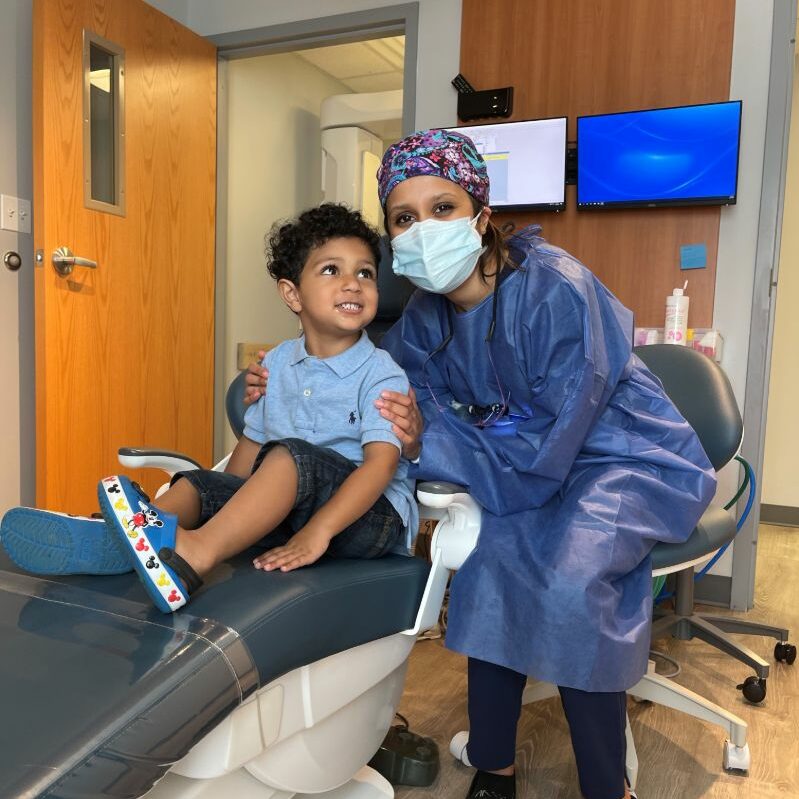Pediatric Dental Emergencies: What Parents Required to Know for Quick and Effective Treatment
In the world of pediatric healthcare, dental emergencies can develop unexpectedly, leaving parents unsure of how to take care of the scenario efficiently. By being prepared and educated, moms and dads can play a critical function in securing their kid's dental wellness.
Indicators of Pediatric Dental Emergencies
When examining pediatric dental emergencies, it is vital for parents to be watchful for specific indicators indicating prospective serious problems. One of the primary signs of an oral emergency situation in children is consistent tooth pain that is not minimized by non-prescription discomfort medicines.

Typical Sorts Of Dental Injuries
Usual kinds of oral injuries in children usually result from accidents or sports-related activities that can bring about different forms of trauma to the mouth and teeth. One common dental injury is a fractured tooth, which can range from a small chip to a much more serious break involving the inner layers of the tooth. Another regular injury is a knocked-out tooth, where instant action is crucial to boost the opportunities of conserving the tooth. Youngsters might additionally experience dental injuries like tooth breach, where the tooth is pressed into the jawbone, or avulsion, which is the total variation of a tooth from its outlet. Additionally, dental injuries can consist of luxation, where the tooth is dislodged yet not completely knocked out, or soft tissue injuries to the periodontals, lips, or tongue. It is necessary for moms and dads to be familiar with these typical types of oral injuries to offer timely and appropriate treatment in situation of emergencies.
Immediate First Help Actions
Upon encountering a pediatric oral emergency, swift and suitable very first aid measures are important to reduce pain and stop additional issues. For a knocked-out tooth, advise the kid to carefully rinse the tooth with water, attempting not to touch the origin, and place it back official source in the outlet if possible. If re-implantation is not feasible, store the tooth in a container of milk or the child's saliva until getting to the dental practitioner.
When to Look For Professional Assistance
Seeking punctual dental treatment from a pediatric specialist is crucial in resolving prospective problems emerging from pediatric oral emergency situations. Moms and dads ought to look for professional assistance right away if their youngster experiences severe tooth discomfort, facial swelling, hemorrhaging that Web Site doesn't quit, a knocked-out long-term tooth, or any type of trauma to the mouth or face. These indicators suggest a severe dental problem that calls for prompt attention from a pediatric dentist.
In addition, if a child experiences relentless tooth sensitivity to warm or chilly, problem eating or swallowing, or signs of infection such as pus around the periodontals, parents must not postpone in seeking professional dental treatment. These symptoms might indicate underlying oral issues that need to be dealt with quickly to prevent additional complications.
In cases of dental emergencies, it is crucial for parents to get in touch with a pediatric dental professional immediately to make sure correct diagnosis and therapy - children dentistry oakland. Delaying specialist help can result in exacerbated oral problems and prolonged discomfort for the child

Protecting Against Future Dental Emergencies
To minimize the chance of future oral emergencies, parents should focus on consistent dental hygiene techniques and routine sees to a pediatric dental expert for preventative treatment. Encouraging youngsters to comb their teeth twice a day with fluoride toothpaste and showing them the appropriate method for 2 mins each time can dramatically reduce the risk of oral issues.
Normal visits to find your dentist a pediatric dental professional for check-ups and cleanings are essential for early discovery of any type of potential dental problems. These visits enable the dentist to monitor the youngster's oral health, provide specialist cleansings to get rid of plaque and tartar buildup, apply fluoride therapies for added security, and deal assistance on appropriate dental treatment methods.
Conclusion
In verdict, parents need to know the indications of pediatric dental emergencies, usual kinds of oral injuries, immediate emergency treatment steps, and when to look for professional assistance. By taking proactive steps to protect against future dental emergency situations, parents can make certain quick and reliable treatment for their kids. It is essential to stay educated and prepared in order to manage any oral emergency that may arise.